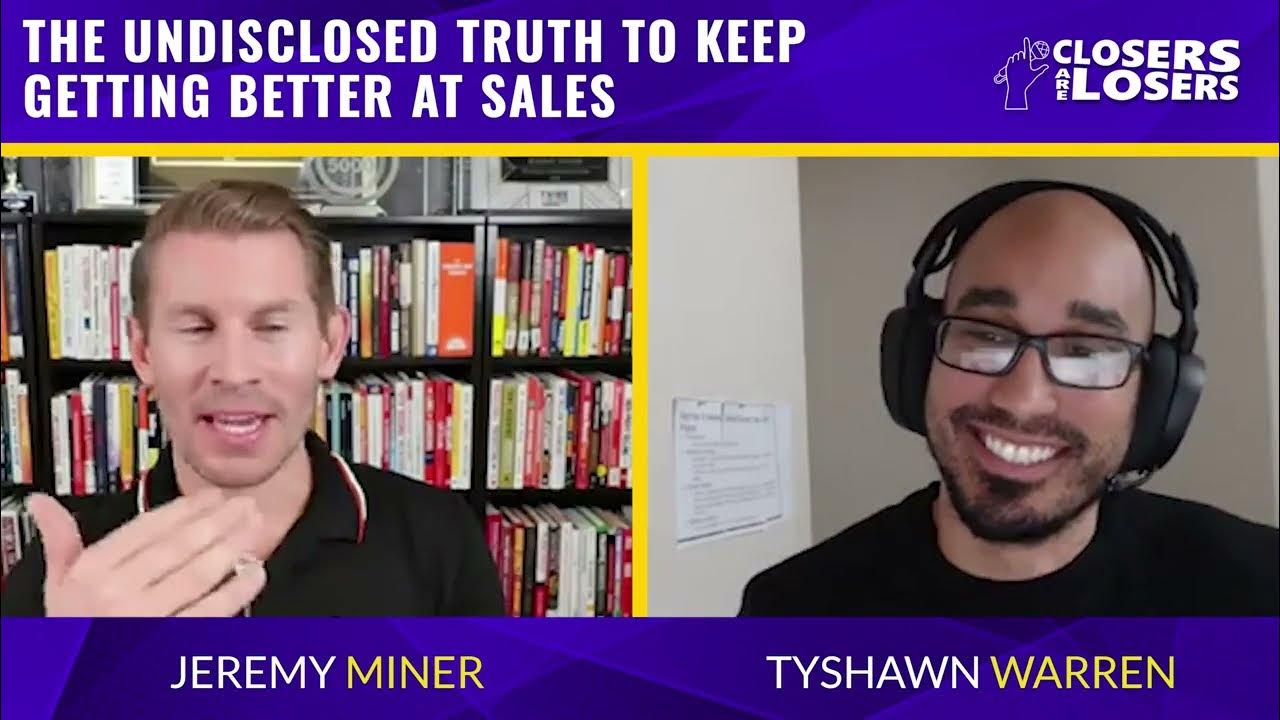How to Sell Your Product or Service - Developing Options for Clients (Part 9 of 11)
Summary
TLDRIn this sales training script, the focus is on guiding clients through their decision-making process after a product demo. Salespeople should educate clients on their options, not just push features and benefits. By presenting three clear options, each with pros and cons, and highlighting the consequences of doing nothing, the salesperson helps the client understand the urgency of taking action. Compelling stories, such as the hound dog and pest control examples, are used to illustrate the risks of inaction. The goal is to ensure the client makes an informed decision and takes action toward solving their problem.
Takeaways
- 😀 After the demo, the client is focused on understanding their options, not just the product features.
- 😀 The educational phase of the sales process involves presenting three clear options with pros and cons for each.
- 😀 Avoid overwhelming the client with too many choices—limit the options to three for clarity and decision-making.
- 😀 Introduce the 'invisible fourth option' of doing nothing, and clearly explain the long-term consequences of inaction.
- 😀 Use storytelling to create urgency, like the example of the hound dog to highlight the effects of inaction.
- 😀 Salespeople should guide clients towards a decision while respecting their freedom to choose the best option.
- 😀 The focus should be on educating, not selling—help clients understand their needs and how to address them.
- 😀 When presenting options, highlight the pros and cons of each one to make the decision-making process easier for the client.
- 😀 The fourth option (doing nothing) should not be ignored—present the consequences of inaction to increase urgency.
- 😀 Using real-world examples, like pest control issues or past customer experiences, helps clients understand the risks of delaying their decision.
Q & A
What is the client's mindset after the demo?
-After the demo, the client is thinking about their options. They are considering what choices they have and how they can proceed to solve their problem.
Why is it important to educate the client about their options instead of just selling features?
-Educating the client helps them understand their choices more clearly, which builds trust and empowers them to make an informed decision. Simply selling features can overwhelm them without offering a clear path forward.
How many options should a salesperson present to the client, and why?
-It’s recommended to present no more than three options. This keeps things clear and manageable, helping the client focus on making a decision without feeling overwhelmed by too many choices.
What is the purpose of listing the pros and cons of each option?
-Listing the pros and cons allows the client to weigh the benefits and drawbacks of each option, making it easier for them to understand how each one aligns with their needs and preferences.
What is the 'invisible fourth option,' and why should it be presented?
-The invisible fourth option refers to doing nothing. Presenting it highlights the potential negative consequences of inaction, which can create a sense of urgency for the client to act.
Can the salesperson recommend a specific option to the client?
-Yes, the salesperson can and should recommend an option based on their understanding of the client’s needs. This guidance helps steer the client toward the solution that best suits their situation.
How should the salesperson handle clients who hesitate or say 'I'll think about it'?
-In such cases, the salesperson should emphasize the invisible fourth option, explaining the consequences of not taking action. This approach helps highlight the importance of making a decision sooner rather than later.
What role do stories play in this sales approach?
-Stories are used to illustrate the potential negative outcomes of inaction. They help create urgency by showing clients the long-term effects of not addressing their problems, making the decision to act more compelling.
How can the salesperson structure the conversation to guide the client toward a decision?
-The salesperson should present three clear options, explain their pros and cons, and introduce the invisible fourth option of doing nothing. By doing this, they help the client understand their choices and the consequences of inaction, ultimately guiding them toward a decision.
What is the transition from the options phase to the pricing phase?
-After educating the client on the available options and addressing the consequences of inaction, the salesperson can transition to pricing by summarizing the benefits of the recommended solution and preparing the client for the financial discussion.
Outlines

This section is available to paid users only. Please upgrade to access this part.
Upgrade NowMindmap

This section is available to paid users only. Please upgrade to access this part.
Upgrade NowKeywords

This section is available to paid users only. Please upgrade to access this part.
Upgrade NowHighlights

This section is available to paid users only. Please upgrade to access this part.
Upgrade NowTranscripts

This section is available to paid users only. Please upgrade to access this part.
Upgrade NowBrowse More Related Video

FLAVIO AUGUSTO DÁ DICA INFALÍVEL DE VENDAS

How to Sell Your Product or Service - Demonstrating Your Product (Part 8 of 11)

The Undisclosed Truth to Keep Getting Better at Sales

CLOSING VIDEO BY SACHIN GUPTA IN HINDI (PART-1)

How to nail your product positioning | April Dunford (Obviously Awesome)

The ONE Technique You Need To 10X Your Sales
5.0 / 5 (0 votes)